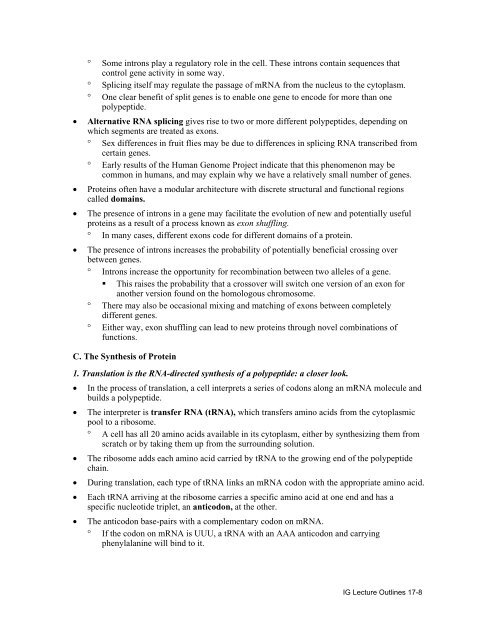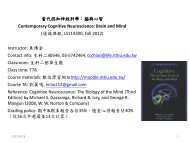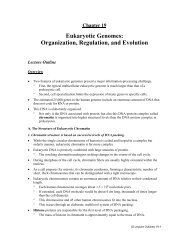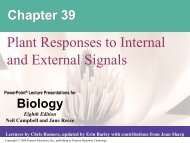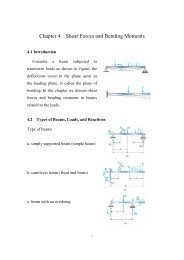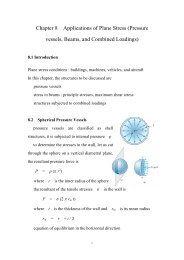CHAPTER 17 FROM GENE TO PROTEIN
CHAPTER 17 FROM GENE TO PROTEIN
CHAPTER 17 FROM GENE TO PROTEIN
- No tags were found...
You also want an ePaper? Increase the reach of your titles
YUMPU automatically turns print PDFs into web optimized ePapers that Google loves.
° Some introns play a regulatory role in the cell. These introns contain sequences thatcontrol gene activity in some way.° Splicing itself may regulate the passage of mRNA from the nucleus to the cytoplasm.° One clear benefit of split genes is to enable one gene to encode for more than onepolypeptide.• Alternative RNA splicing gives rise to two or more different polypeptides, depending onwhich segments are treated as exons.° Sex differences in fruit flies may be due to differences in splicing RNA transcribed fromcertain genes.° Early results of the Human Genome Project indicate that this phenomenon may becommon in humans, and may explain why we have a relatively small number of genes.• Proteins often have a modular architecture with discrete structural and functional regionscalled domains.• The presence of introns in a gene may facilitate the evolution of new and potentially usefulproteins as a result of a process known as exon shuffling.° In many cases, different exons code for different domains of a protein.• The presence of introns increases the probability of potentially beneficial crossing overbetween genes.° Introns increase the opportunity for recombination between two alleles of a gene.• This raises the probability that a crossover will switch one version of an exon foranother version found on the homologous chromosome.° There may also be occasional mixing and matching of exons between completelydifferent genes.° Either way, exon shuffling can lead to new proteins through novel combinations offunctions.C. The Synthesis of Protein1. Translation is the RNA-directed synthesis of a polypeptide: a closer look.• In the process of translation, a cell interprets a series of codons along an mRNA molecule andbuilds a polypeptide.• The interpreter is transfer RNA (tRNA), which transfers amino acids from the cytoplasmicpool to a ribosome.° A cell has all 20 amino acids available in its cytoplasm, either by synthesizing them fromscratch or by taking them up from the surrounding solution.• The ribosome adds each amino acid carried by tRNA to the growing end of the polypeptidechain.• During translation, each type of tRNA links an mRNA codon with the appropriate amino acid.• Each tRNA arriving at the ribosome carries a specific amino acid at one end and has aspecific nucleotide triplet, an anticodon, at the other.• The anticodon base-pairs with a complementary codon on mRNA.° If the codon on mRNA is UUU, a tRNA with an AAA anticodon and carryingphenylalanine will bind to it.IG Lecture Outlines <strong>17</strong>-8


